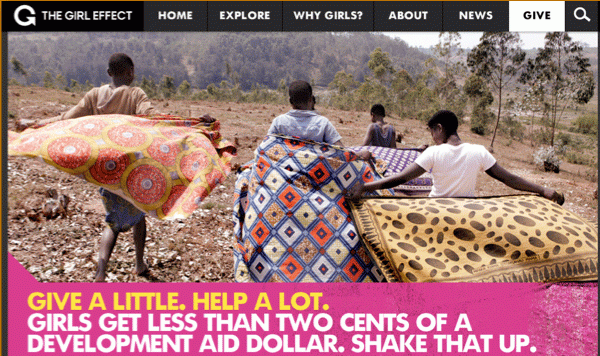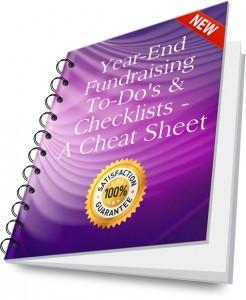
Watch me pull a heartfelt donation out of a hat!
You’ve still got time to sprinkle a little magic into your year-end fundraising!
Consider each of these seven words a magic potion unto themselves.
- You
- Because
- Thanks
- Small
- Immediate
- Expert
- Support
The more of these words you use, the more powerful a spell your appeal will cast.
Each of these packs a bigger persuasive punch than you might imagine.
Let’s take a closer look at how this works.
1. You
“You” is one of the five most powerful words in the English language. To make philanthropy about your donor’s experience, not yours, use “you” rather than “I” or “our” or “we” (unless it’s “we, together”). Cross out all the ego-centric stuff in your copy and rewrite.
As veteran communicator Tom Ahern says ”you is the glue.”
- “You” grabs your donor’s attention.
- “You” is personal.
- “You” helps to “tip” your donor towards seeing your request in a positive light.
- “You” makes the story you tell about your donor.
Make fulfilling your organization’s mission about your donor’s actions. Make the values your organization enacts about your donor’s caring, generosity and good character.
Use “you” to make your donor the hero. Instead of “We cure cancer” or “Our organization cures cancer” or “They cure cancer,” substitute “You” and “Your.”
Show your donor how to be the very best version of themselves.
“You can do this.”
“You did this.”
“Your commitment will make this happen.”
“You are magic… powerful… extraordinary… unselfish… honorable… wise… far-seeing…
Flatter your donor. Assume your donor’s best qualities. Allow your donor to rise to the occasion.
2. Because
I thought my Mom was crazy when she said “do this because I said so” to me.
Who knew there was method to her madness?!
Guess what?
Neuroscience studies show this magic word can make any statement more persuasive.
One of the most interesting studies, reported by Harvard Magazine, revealed that as a trigger for acquiescence, the word “because” increased the success rate by over 30%.
I found this freaking amazing when I learned it, and I’ve used it ever since.
It turns out “because” is one of the persuasion principles that help explain the psychology of why people say “yes” without thinking.
The human brain is wired to react when it hears because.
It is a magical word — an automatic trigger for compliance.
Sure, you can get a yes without using this little tip. You can get people to think and consider your appeal and still make a contribution. But if you can boost your chance by 30%, wouldn’t that be a very smart thing to do?
Examples of how to use “because”:
Instead of “Today I’m sharing Amelia’s story with you.”
Say “Today I’m sharing Amelia’s story with you because she needs your help.”
Instead of “Yes, I want to give.”
Say “Yes, I want to give because children need me.”
Instead of “Please consider a gift of $500.”
Say “Please consider a gift of $500 because children need your help.”
Instead of “Provide a meal to a starving child.”
Say “Provide a meal because Miguel is starving.”
You can do this to almost any sentence.
It seems almost ridiculous, yet the research reveals the way people respond is often somewhat mindless, based more upon the familiar framework within which a request is made than on the content.
Using the word “because” triggers that familiarity framework. It gives folks an explicitly expressed reason to do something, rather than an implied reason.
This sets the stage that kicks in the psychology of unconscious social inference.
The difference is subtle, yet the impact is pronounced.
3. Thanks
There is a magical power behind the word “thanks.”
It puts people in a receptive mood.
It’s considered good manners, and makes you look like a good and giving person.
And it gives folks something they really want.
Simply put, it makes folks like you.
Penelope Burk’s groundbreaking research on donor retention found the three principle things donors want from charities all have to do with thank you. They want to be thanked (1) promptly, (2) personally, and (3) in a manner that reflects back the impact of their giving.
How you say thank you will be the single biggest indicator of your donor’s likelihood to give again.
Don’t just save the word “thanks” for your acknowledgement letters.
- When you thank current or lapsed donors in your appeal letters for their past giving, it reminds them they already made a decision to give to you. This triggers one of Cialdini’s six principles of persuasion – commitment and consistency. People tend to repeat decisions they’ve already made because doing so is congruent with their self-image.
- When you thank prospective donors in your appeal letters for being caring people, it plays into the vision of the person they would like to see when they look into the mirror. It’s an ego booster that predisposes them to think well of you.
4. Small (or Little)
Using the word “small” (or a synonym) can make a BIG difference.
I confess, I have trouble sharing this with you. Because for years I advised fundraisers not to use phrases like “Every little bit helps.” I reasoned (1) it’s not really true, because if you don’t raise enough you won’t be able to run your program, and (2) it somewhat diminishes the giver’s gift by calling it “small.”
But research doesn’t lie.
And two studies point to the fact you really do want to sweat the “small” stuff in fundraising.
Robert Cialdini’s research
Dr. Robert Cialdini, Professor of Psychology at Arizona State University and author of the groundbreaking book on the art of persuasion, Influence, examined the donation process of the American Cancer Society. He found that adding a minimal parameter to the gift solicitation delivered drastically different results.
In a door-to-door solicitation, one group of prospective donors were asked:
“Would you be willing to help by giving a donation?”
Another group were asked:
“Would you be willing to help by giving a donation? Every penny will help.”
People who were asked the second variation were almost twice as likely to donate!

The other amazing take-away from this study was the amount donors gave did not vary with the addition of the diminutive qualifier. Simply knowing that even a penny could help spurred people who might not otherwise have acted to give.
Carnegie Mellon University research
In a consumer study, researchers changed the description of an overnight shipping charge on a free DVD trial offer from “a $5 fee” to “a small $5 fee.”
 Simply adding the word “small” increased conversion by 20%!
Simply adding the word “small” increased conversion by 20%!
I should note you may want to target your market a bit when using this kind of ask, because there are three types of donors: Spendthrifts; Tightwads and Average Spenders. The “small” approach works especially well for the Tightwads (those most reluctant to part with their money), who likely account for about a quarter of your list. Neuroscientists have found the brains of Tightwads feel more “buying pain” than typical individuals. By using a diminutive term in your ask, you actually help to ease their pain.
Here’s an example I like:

5. Immediately
We live in an instant gratification culture. We buy something online; we want to receive it overnight. We make a charitable donation online; we want to know it went to work right away.
If this is reminding you to get your donor’s thank you letter out right away, good! You should always follow through right away to show your donors their gift was received and will be put right to work. But how can you use immediacy to persuade your donor to make a gift in the first place?
Ah…
Simply tell them “your gift will be put to work immediately.” Or “your gift will instantly be put to work.”
Gregory Ciotti’s Research
According to research by marketing strategist Gregory Ciotti people are wired for instant gratification: “our mid-brain lights up when we think about receiving something right away (and that’s the one [part of the brain] we want to fire up!).”
(MRI) studies, including one on nicotine addiction, have shown our frontal cortex is highly active when we think about having to wait for something. It makes us anxious. You don’t want your donor to be feeling anxious about donating to you!
Instead, you’re better off doing something to light up their mid-brain (where their pleasure center sits) so they think about receiving something right away and feel excited anticipation. This is what will get them to click on “Donate.”
In addition to excitement, when you trigger your donor to think about getting something right away (in this case it’s the warm glow of knowing the action they took resulted in a direct, immediate outcome), they feel emotionally satisfied. Satisfaction leads to action. Emotional satisfaction leads to long-term engagement.
Look at the difference here:
“When you donate you’ll instantly receive a profile of one of the women whose lives have been changed by your support”
“Immediately show your support by giving to end human trafficking and we’ll instantly send you a video message from our staff in the field.”
6. Expert
We trust authorities and experts. We seek them out whenever we need to make an informed decision.
And trust, for nonprofits, is an important commodity. It’s the foundation of all lasting relationships, and this holds true in spades for your relations with donors. If you can get donors to trust you, half the battle is won.
Unfortunately, many folks have less than a high opinion of charities. You need to overcome the perception you may not be trustworthy. One way to do that is to showcase your expertise.
If you have highly reputable professionals on your team, make this known. List the credentials of your program directors, researchers, scientists, teachers, lawyers, doctors, therapists, artists and musicians.
If you have highly esteemed board members or donors, ask them to endorse you. This serves as social proof – another of Cialdini’s principles of persuasion. Little testimonials embedded into your appeals and donation landing pages can work wonders.
But nothing converts to donations better than actually using the word “expert” in your call to action. Imagine these two different appeals:
Yes, I want to support cancer research!
Yes, I want to support the expert cancer research team!
OR
Yes, I want to support the fieldwork team.
Yes, I want to send experts into the field to help rebuild.
It may not seem like an earth-shattering difference, but Ultraviolet Digital was able to get their client Kaya Skin Clinic a 137% increase in conversions and a 22% increase in sales by simply reworking their call to action to include the word “expert.”
 7. Support
7. Support
This is a killer tip for your “Donate” button.
Instead of simply saying “donate” on your button or “submit” on your landing page form, research shows you’re better off using the word “support” followed by the name of your cause or your specific campaign purpose. In fact, it can increase your donation rate by 16% per page view.
While you’re at it, research also shows adding a photo and amount increases donations. People simply pay more attention to images than text. And a picture really is worth 1000 words. Especially if it’s one that tells a story. If people can visualize how their money will help support a cause they value, they’ll be more likely to act.
It’s always a good idea to conduct an A/B test yourself if you can. In the example referenced above from the Clinton Bush Haiti Fund, here’s what they found by testing various variables:
They began with a website page with one column of text and no picture. When they added a photo, dollars donated per view increased 1%. When the page was redesigned into two columns, including the photo, and placing the response form side by side with the text, they saw an 8% increase!
When they increased the size of the font on the response form it led to a 2% increase.
When they reduced the number of fields on the response form (eliminating title, phone number) this netted an 11% increase.
When they deleted the “security” icon this reduced dollars per view by 5%.
When they changed the language on the “donate” button from “submit” to “support Haiti” this resulted in a 16% increase in dollars donated per view.
Do You Believe in Magic?
It’s always good to have a few research-based fundraising tricks up your sleeve.
I’ve written about these magic words in the past, but… seriously folks, you’ve got to start using them!
Use more of them. Use them more often. Just give it a try!
“You,” “Because,” “Thanks.,” “Small,” “Immediate,” “Expert,” and “Support.”
You’ll be well on your way to an appeal your donors won’t want to refuse.
Want More Help with Year-End Fundraising?

Tons of useful year-end fundraising tips!
If you’ve got your year-end fundraising plan completely under control, congrats! If you think a few tweaks might make a difference in your results — like the “magic” tweaks discussed in this article — grab my Year-End Fundraising Solution Kit – To-Do’s and Checklists. It’s a step-by-step comprehensive road map to effective year-end fundraising. This Solution Kit provides an all-in-one guide for ticking off the things you may be missing or may not quite have finished. After working 30+ years in the trenches, I can vouch for this stuff. It’s tried and true! Not satisfied? All Clairification products come with a 30-day, no-questions-asked, money-back guarantee. You truly can’t lose!
And if you can’t do everything you wish you could this year, pick just one new thing; then get ahead of the game and put it on your list for next year.
This article appeared previously on Clairification.





